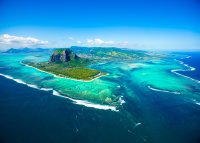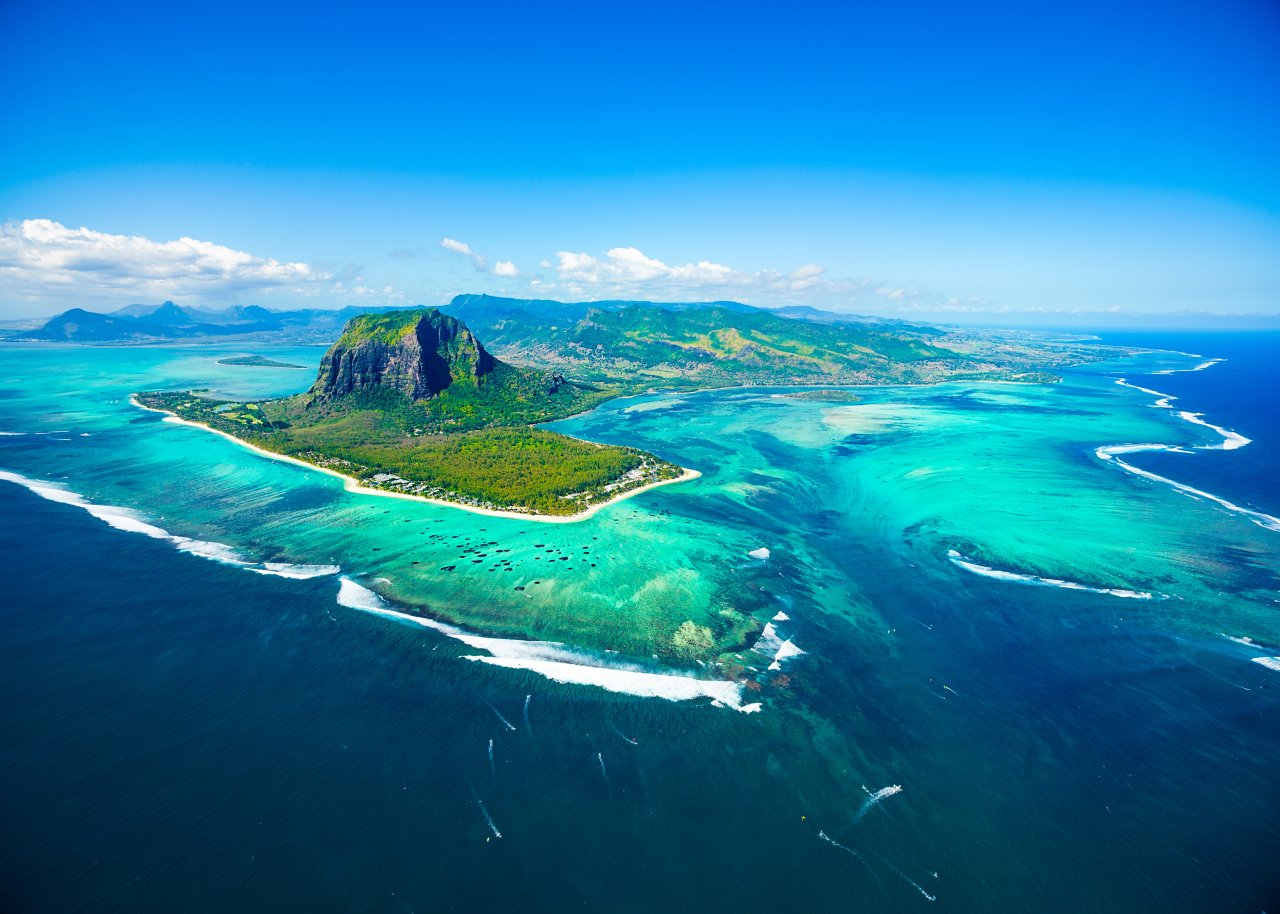There are 671 species of indigenous flowering plant recorded in Mauritius, of which 311 are endemic (Mauritius has eight endemic plant genera), and 150 are endemic to the Mascarene Islands. Of the indigenous plant species, 77 are classified as extinct and 235 as threatened.
Widespread habitat destruction has rendered many endemic plants extremely rare: some species are now down to just one or two specimens. Indigenous species, which are shared with Réunion and/or Rodrigues, have stood a better chance of survival. However, as on Réunion and Rodrigues, most of the flora you’ll see on Mauritius is of introduced species.
To find examples of the impressive tropical hardwood trees that once covered much of Mauritius, go to the Black River Gorges National Park, where many are still represented. Only approximately 1.3% of Mauritius’s virgin forest remains, and most of it is found in this national park.
Undoubtedly the island’s best-known hardwood, the Mauritius ebony (Diospyros tesselaria) was in particularly high demand because it has the darkest wood of any tree. Its congener on Réunion (D. borbonica) is still quite plentiful but the Mauritian species was almost wiped out. Other impressive protected hardwoods found in Black River Gorges include various species of the genera Mimusops and Sideroxylon, as well as Labourdonnaisia. Quite a few of the rare, slow-growing hardwoods are shared with Réunion, such as the takamaka (Calophyllum tacamahaca), the ‘rat’ tree (Tarenna borbonica) and the bois blanc (Hernandia mascarenensis).
There are 89 species of orchid found in Mauritius. Of those, 94% are endemic to the Mascarenes/Madagascar region. Nine species are endemic to Mauritius only. Certain orchids, like Oeniella polystachys and Angraecum eburneum, have become rare, so attempts are being made to conserve them on Ile aux Aigrettes, where they can be seen in the wild.
Seven species of palm are endemic to Mauritius. Most of these are in cultivation because in the wild they are all gravely threatened. Two palms – Hyophorbe amaricaulis and Dyctosperma album var. conjugatum – are down to a single wild individual each. The latter, which is sought-after for heart-of-palm salad, has been cultivated successfully by the Mauritian Wildlife Foundation (MWF) as part of a project to rescue all endangered flora. However, the species Hyophorbe amaricaulis appears to be doomed.
A problem facing botanists and conservationists currently is lack of information about the indigenous flora. For instance, very little is known about pollinator agents. However, the MWF, in conjunction with several foreign universities, has been engaged in studies of Mauritian plant pollinators: bats, invertebrates like hawk moths, butterflies and beetles, passerine birds and reptiles like Phelsuma geckos. Where plants have been decimated, their pollinators suffer likewise, particularly those that are specifically associated with one or two plant species.
In terms of flowering plants, one of the most impressive endemics is the bois bouquet banané (Ochna mauritania). In summer (November to January), this small deciduous shrub can be seen covered in a display of white flowers, at Pétrin and in Black River Gorges National Park.
Of the various plants with medicinal properties, the best known is the bois de ronde (Erythroxylon laurifolium), the bark of which is used to treat kidney stones.
Finally, the national flower of Mauritius is the rare and beautiful Trochetia boutoniana (or boucle d’oreille, which means ‘earring’) of the Serculiaceae family. Forget about seeing this stunner in the wild, though – it is confined to a single mountaintop. But being the national flower, it is cultivated in various sites, for example at the Special Mobile Force Museum in Vacoas and in the grounds of the Forestry Service. The closely related (and just as beautiful) Trochetia blackburniana is a little more plentiful and can be seen along the road at Plaine Champagne. It also has lovely pinkish-crimson flowers.
The sole surviving endemic mammal is the striking Mauritius fruit bat (Pteropus niger), which still exists in fair numbers. Like its endangered cousin, the Rodrigues fruit bat (P. rodericensis), the much darker Mauritius fruit bat roosts in large trees by day and forages for fruit and flowers at night. These fruit bats belong to a predominantly Asian genus also present in Madagascar and the Comoros, where they reach their westernmost limit. A third Mascarene fruit bat, Pteropus subniger, is sadly extinct. To see fruit bats, go to Black River Gorges, the Moka Mountains, Savannah or the Grand Port Mountains.















